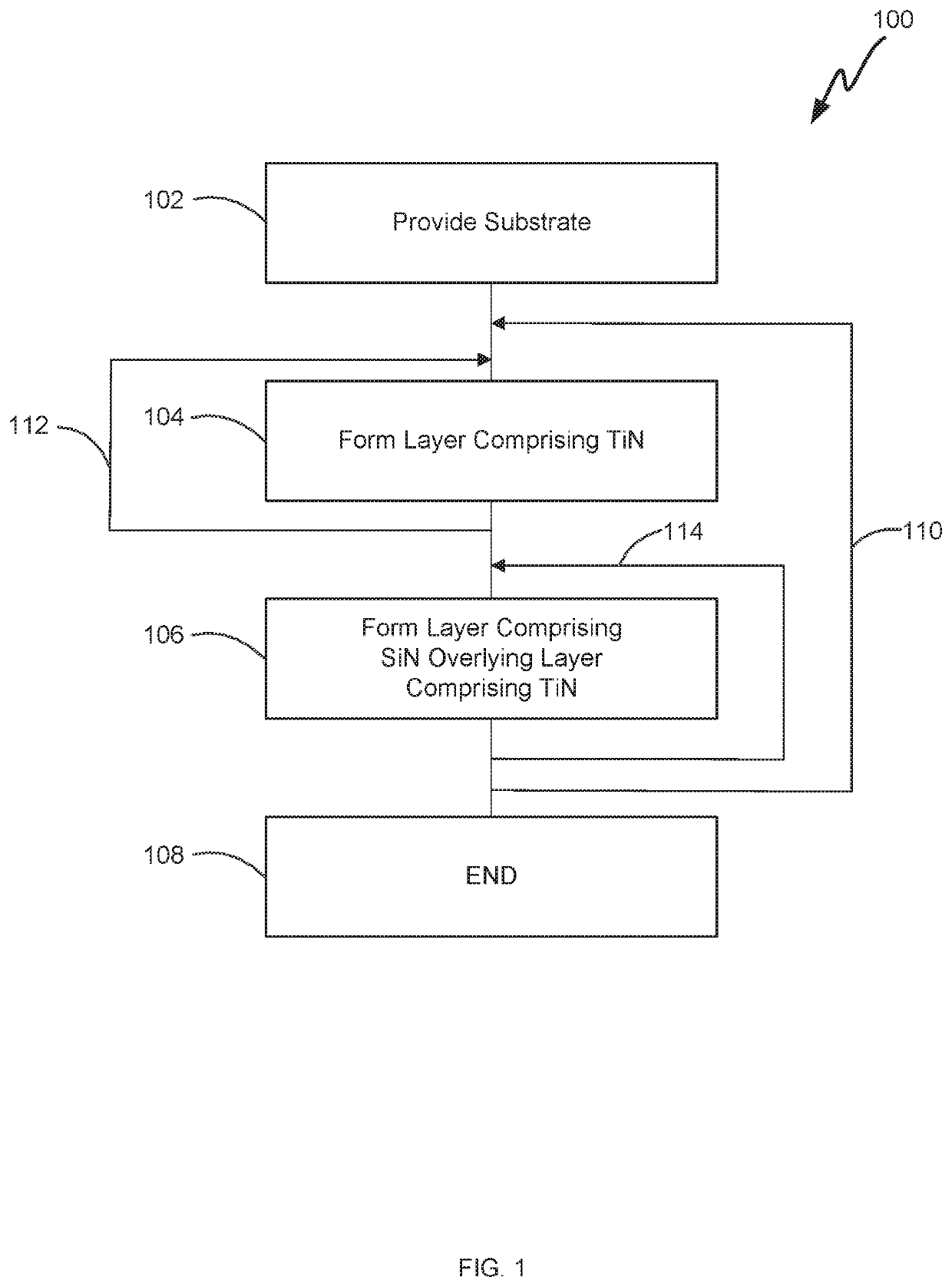Method of forming a structure including silicon nitride on titanium nitride and structure formed using the method
a technology of titanium nitride and silicon nitride, which is applied in the direction of superimposed coating process, chemical vapor deposition coating, coating, etc., can solve the problems of oxidation of titanium nitride material, relatively high procedure cost, and general less desirable metal film of mos device, etc., and achieve the effect of mitigating the oxidation of titanium nitride film
- Summary
- Abstract
- Description
- Claims
- Application Information
AI Technical Summary
Benefits of technology
Problems solved by technology
Method used
Image
Examples
Embodiment Construction
[0013]The description of exemplary embodiments provided below is merely exemplary and is intended for purposes of illustration only; the following description is not intended to limit the scope of the disclosure or the claims. Moreover, recitation of multiple embodiments having stated features is not intended to exclude other embodiments having additional features or other embodiments incorporating different combinations of the stated features. Further, the illustrations presented herein are not meant to be actual views of any particular material, structure, or device, but are merely idealized representations that are used to describe embodiments of the disclosure.
[0014]The present disclosure generally relates to methods of forming structures and to structures formed using the methods. As set forth in more detail below, the methods and structures described herein can be used to form, for example, MOS devices having high-mobility channel material (e.g., silicon germanium) with relati...
PUM
| Property | Measurement | Unit |
|---|---|---|
| thickness | aaaaa | aaaaa |
| temperature | aaaaa | aaaaa |
| thickness | aaaaa | aaaaa |
Abstract
Description
Claims
Application Information
 Login to View More
Login to View More - R&D
- Intellectual Property
- Life Sciences
- Materials
- Tech Scout
- Unparalleled Data Quality
- Higher Quality Content
- 60% Fewer Hallucinations
Browse by: Latest US Patents, China's latest patents, Technical Efficacy Thesaurus, Application Domain, Technology Topic, Popular Technical Reports.
© 2025 PatSnap. All rights reserved.Legal|Privacy policy|Modern Slavery Act Transparency Statement|Sitemap|About US| Contact US: help@patsnap.com



